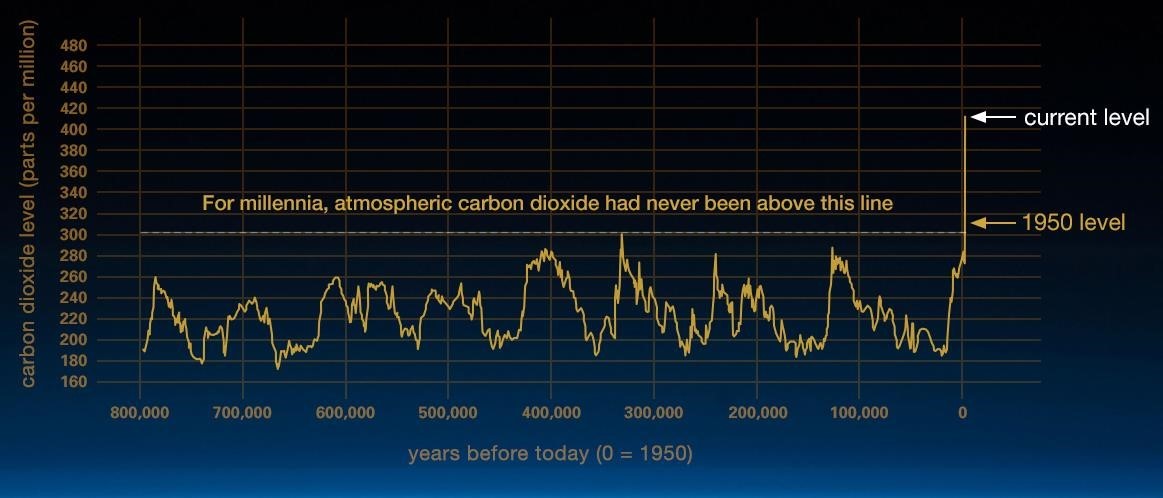Despite international agreements like the Paris Accord signed in 2015 by 196 nations which agreed to take measures to limit CO2 emissions in order to keep global temperature increases below 2 oC, too little progress has been made towards meeting those goals. As if to underscore the collective lack of action to reduce carbon emissions, the highest ever recorded atmospheric CO2 concentration, 423 ppm, was measured at Mauna Loa, Hawaii, in June of 2022.
In a nearly perfect correlation with changes in atmospheric CO2 concentrations, the Earth’s average surface temperature has risen about 1o C over the past 50 years, with impacts on weather patterns, extreme weather events, ecosystem function, and human societies already occurring. Such impacts are projected to become more widespread and severe if the Earth warms another 2 oC as predicted under a low-emissions scenario. If a 3 oC increase occurs, as projected by a high- emissions scenario, many scientists believe the Earth will reach a “tipping point,” with a catastrophic collapse of many ecosystems and cascading impacts across human communities.
Which of these projected climate outcomes we pass on to the next generation depends on our efforts now to reduce greenhouse gas (GHG) emissions globally.
In this unit, you’ll evaluate three concrete steps that could be taken to reduce CO2 emissions.

The Problem
Other climate myths, such as “it’s part of a natural cycle” or “CO2 is good for plants,” have also been used to justify inaction.
Based on the body of work presented in the new discipline of attribution science, there is no longer serious debate among the scientific community.
The Role of Climate Change
Solutions
While the success of efforts to coordinate actions across nations has been limited, other entities, ranging from individual cities to the United Nations, have stepped up their own efforts to find and implement solutions (e.g., the Paris Accord).
For example, the State of Vermont recently developed and adopted a Climate Action Plan, which includes 26 pathways for actions to meet emission reduction goals statewide
Build Your Foundational Knowledge
Residential energy efficiency:
Halfway There: Energy Efficiency Can Cut Energy Use and Greenhouse Gas Emissions in Half by 2050.
Solar farms:
How solar panels reduce your carbon footprint
Reforestation:
Afforestation and Reforestation: Restoring trees to ecologically suitable landscapes
Solutions
1.3.1 Small Group Guided Worksheets
Additional sources:
Residential energy efficiency: Energy efficiency and the fight against climate change | World Economic Forum (weforum.org)
Solar Farms: The Potential of Solar Energy to Mitigate Climate Change – Off Grid World
Reforestation: In best–case reforestation scenario, trees could remove most of the carbon humans have added to the atmosphere | NOVA | PBS